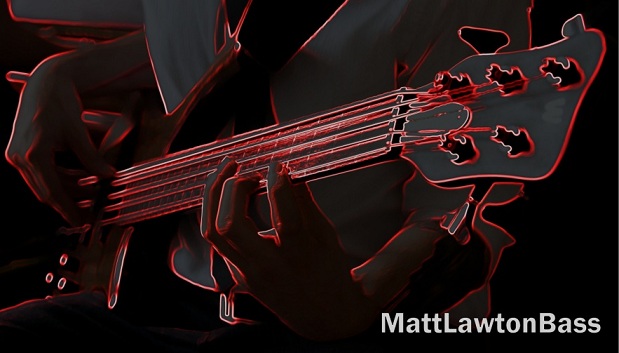The first thing to note about this transcription is that Anthony Jackson uses a 6 string bass and utilises the full range of the instrument in his playing, secondly there are a few odd looking rhythms in there but when listened in context with what Petrucianni was playing they make more sense!
He begins his line on low C and climbs chromatically to the 3rd of the chord. Jackson stays in this low range as he arrives at the D7b5 playing just the root and b9.
He brings some ambiguity to the chord in the next bar by playing a natural 7 and a natural 5. The confusion continues with this chord with Jackson playing a natural 5 and natural 7 every time it crops up. I would say he is probably thinking in the Lydian mode which would leave the piano open to voice the chord as Dmaj7#4 (essentially keeping the b5). Jackson still uses the b9 that you would expect to find in a D7b5 chord but usually as a chromatic note to the natural 9. This chord is clearly open to interpretation! Leave me a comment below and let me know your thoughts on this!
Another feature in this line that I really like is the way that Jackson targets chord tones as in the example above from the first bar. At bar 9 he uses this same device descending the C major scale for the first 3 beats, adding a chromatic note on beat 4 to land the 5 of the chord on beat 1 of the next bar. Check out his run on bar 20 to the root of the D7 too.
My favourite example of this is the monster two octave run down starting in bar 25. He begins with the same lick from bar 9 but an octave higher, once he's played the 5 he'd targeted he moves down an inversion of the C arpeggio (3 R 5) before finishing on C for beat 1 of the D7b5. This blurs the line between chord changes but also serves as a passing note to the root of the next chord for beat 2.
The last thing I found that I really like about this bass line is the way that Jackson develops a one bar phrase for the four bars of F in the B section. After playing an opening phrase this is altered slightly over the next two bars and then finished off with a run down targeting the root of the next chord. This is a concept that has helped me massively in keeping walking over static chords interesting.



No comments:
Post a Comment